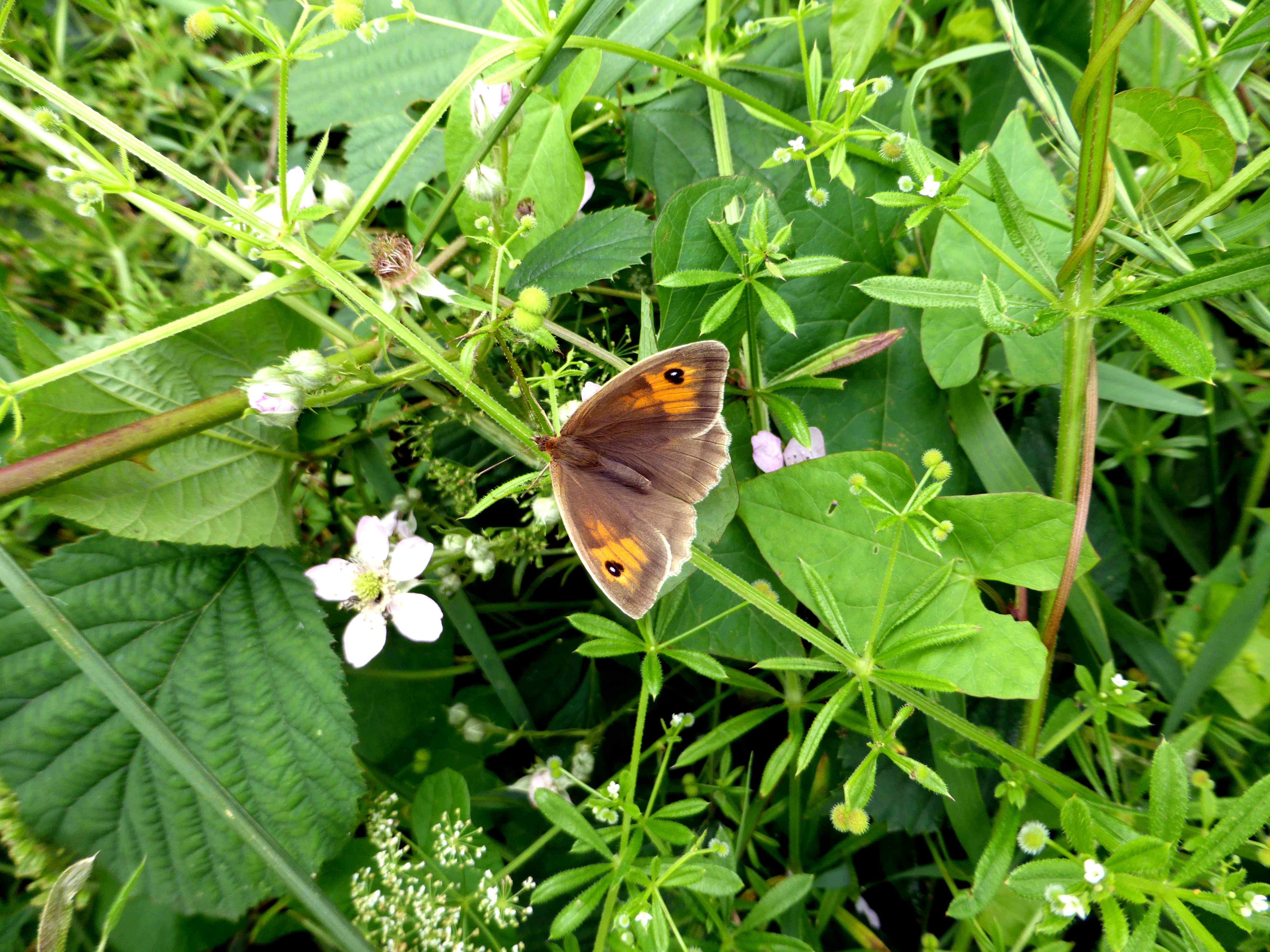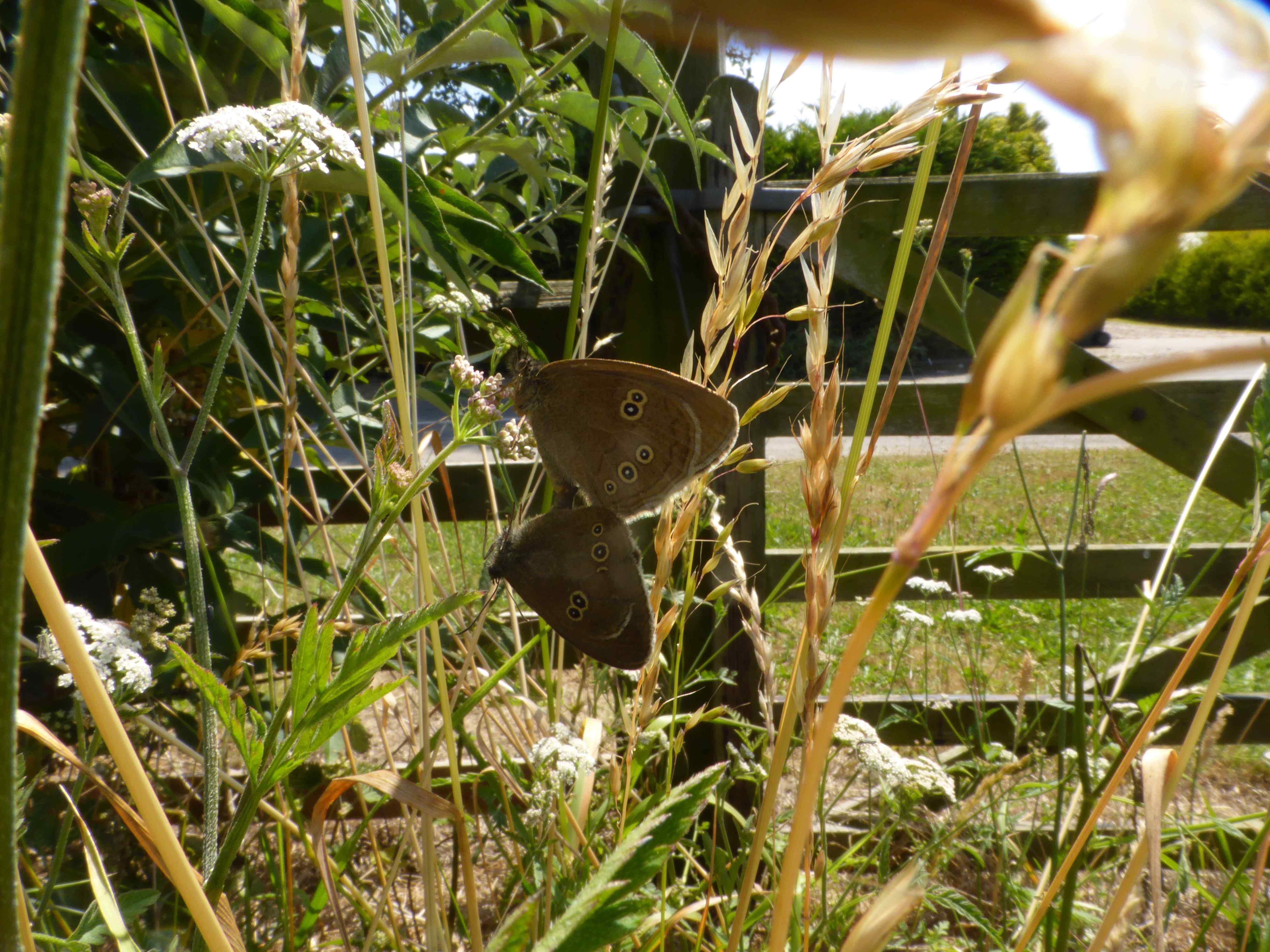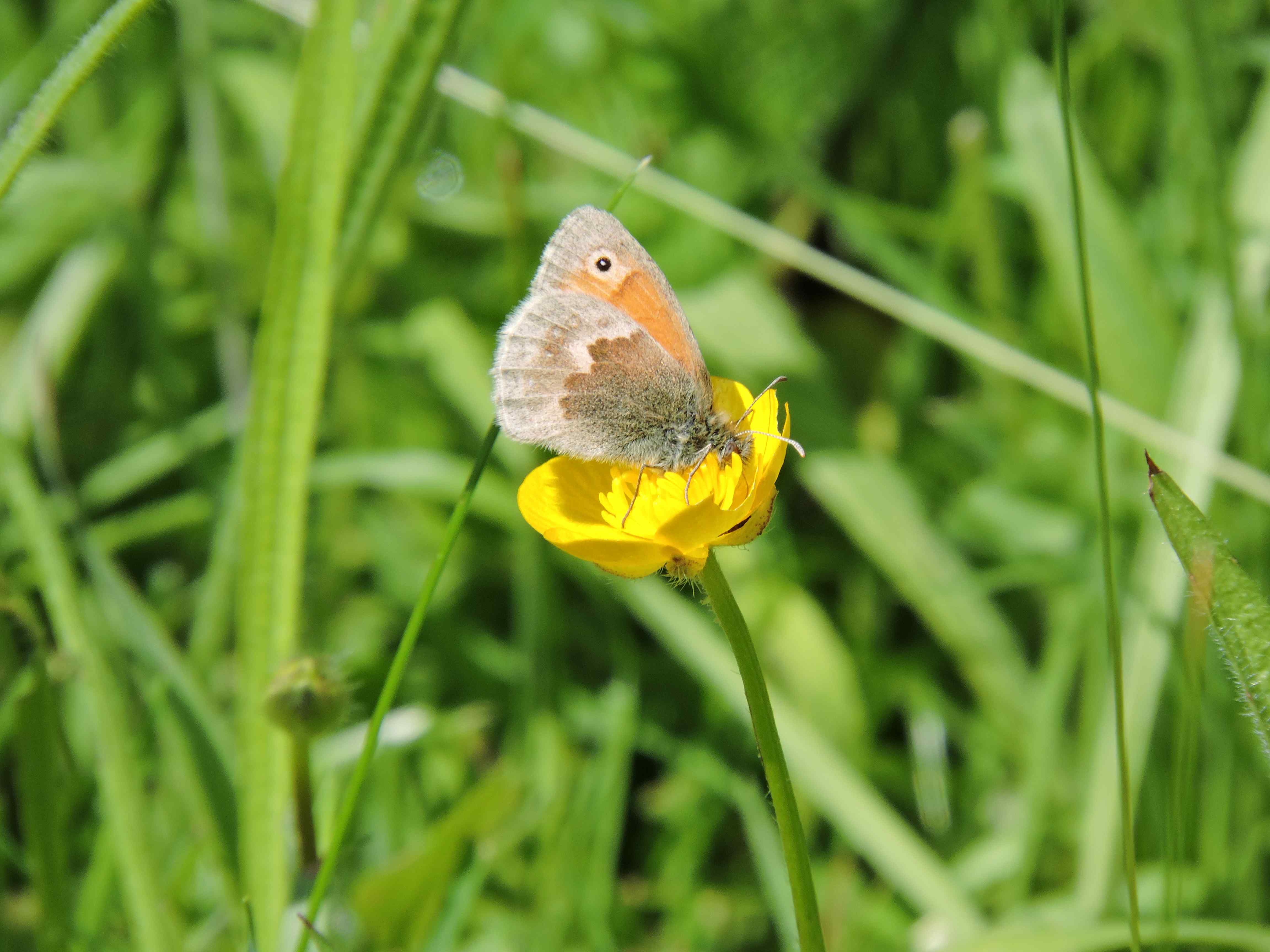Browns
 Browns
Browns
Family: SATYRIDAE
A group of mainly grassland butterflies that mostly occur in colonies that can be quite numerous when established. Medium sized butterflies, all their larvae being grass feeders.
Speckled Wood (Pararge aegeria)
 Speckled Wood
Speckled Wood
This is a real indication that we have created a true woodland habitat, simply by this woodland butterfly taking up residency in our garden once the trees and hedgerows matured. Now it is firmly established.
CURRENT STATUS: breeds on site, increasing annually.
LARVAL FOODPLANT: grasses that are sheltered by shrubs or hedges.
FAVOURED NECTAR PLANTS: not an avid nectar feeder, preferring aphid honey dew on leaves, but will visit most flowers.
WHEN SEEN: April to June; late July to October.
SPECIALIST REQUIREMENTS: the creation of a woodland habitat giving areas of dappled shade, plus grasses as detailed above.
Wall Brown (Lasiommata megera)
A very sad tale of decline, particularly as there is nothing we can really do about it. This butterfly was common all over the place, doing well in our garden, and then from 2011 there was a sudden decline with only one sighting here since, in 2014. The Wall is generally suffering a major UK decline, being now mainly restricted to coastal and rocky regions.
 Male Wall Brown
Male Wall Brown Female Wall Brown
Female Wall Brown
The sexes of the Wall Brown are quite different, the male being noticeably darker and with diagonal black bands running across the forewings - scent scales used in courtship.
 The Wall Brown gets it's name from its delight of sunning itself on walls, rocks, paths, etc. and is more energetic than the typical bobbing, leisurely nature of most of the Browns.
The Wall Brown gets it's name from its delight of sunning itself on walls, rocks, paths, etc. and is more energetic than the typical bobbing, leisurely nature of most of the Browns.
CURRENT STATUS: originally quite common, currently absent, none seen since a one-off in 2014.
LARVAL FOODPLANT: grasses.
FAVOURED NECTAR PLANTS: buddleia; hawkweeds; fox-and-cubs; ragwort; scabious; devil's-bit scabious; marjoram; hemp agrimony; verbena bonariensis.
WHEN SEEN: May and June; late July to September.
SPECIALIST REQUIREMENTS: quite an elaborate mosaic of grass heights seems to benefit the egg-laying requirements of the females, who often prefer to lay on very sparse grasses, from which the growing caterpillars can then move away into higher grasses.
Gatekeeper (Pyronia tithonus)
 Gatekeeper
Gatekeeper
Alternatively less romantically known as the Hedge Brown, this Brown frequents hedgerows or shrubby areas, as well as actual woodland rides and clearings. In good colonies it can become very abundant indeed, and its numbers are generally good to very good in our garden where it happily breeds.
 The male is much darker with prominent scent scales on the forewings
The male is much darker with prominent scent scales on the forewings
CURRENT STATUS: up and down somewhat but currently on an up.
LARVAL FOODPLANT: grasses that are sheltered by shrubs or hedges.
FAVOURED NECTAR PLANTS: marjoram; scabious; verbena bonariensis; privet; hemp agrimony; buddleia; bramble.
WHEN SEEN: July and August.
SPECIALIST REQUIREMENTS: the creation of a habitat that loosely fits its natural hedgerow-type environment is the main criteria, otherwise providing grasses as described in larval foodplants above.
Meadow Brown (Maniola jurtina)
 Male Meadow Brown
Male Meadow Brown Female Meadow Brown
Female Meadow Brown
It is usually the male of most species that is the most flamboyant, but not in the case of the Meadow Brown, as the pictures prove.
A very common butterfly in Britain, and often the most common Brown in our garden. Any type of grassy area will suit these butterflies, hence their abundance.
CURRENT STATUS: very well established resident, although numbers a bit up and down in recent years.
LARVAL FOODPLANT: most grasses.
FAVOURED NECTAR PLANTS: scabious; marjoram; knapweed; buddleia; verbena bonariensis; privet; hemp agrimony; thistles.
WHEN SEEN: June - September.
SPECIALIST REQUIREMENTS: grassy areas - it really is not too fussy. sometimes eggs are even deposited in flight as the female flies above the grasses.
Ringlet (Aphantopus hyperantus)
 Male and female Ringlet
Male and female Ringlet
When fresh, the males (left) of this species are nearly jet black and look very striking with the faint white borders to their wings. All too soon though they become very drab and uninspiring - their ornate underside markings remain pretty however, as seen on this mating pair.
 Underside of Ringlet
Underside of Ringlet A rare aberration that we occasionally see. Known as the blind Ringlet with the outer circles of the ringlets missing.
A rare aberration that we occasionally see. Known as the blind Ringlet with the outer circles of the ringlets missing.
Another butterfly that is under no obvious threat, very common in strong localities, more at home in and around woodland than true open situations.
CURRENT STATUS: a common resident, some years far more numerous than others.
LARVAL FOODPLANT: grasses.
FAVOURED NECTAR PLANTS: privet; scabious, creeping thistle (note - this is a troublesome weed to me like anyone else, but where it occurs, mainly on the dyke banks, the Ringlets adore it.)
WHEN SEEN: July and August.
SPECIALIST REQUIREMENTS: by ensuring much of the site is sheltered with long grasses in places, the Ringlet appears quite content to stay with us.
Small Heath (Coenonympha pamphillus)
 Small Heath
Small Heath
This tiny butterfly is one of the few that never open their wings once settled. Nevertheless it conveys its own degree of charm and is lovely to see a few of them flitting around the garden. In heathland and open countryside where short grass prevails this is one of our commonest species.
CURRENT STATUS: there is a small colony somewhere in our locality; occasional strays were seen in the early years but a massive gap of no sightings between 2002-10 when none were seen. Since 2011 singletons recorded some years. 2020 showed indications of a possible comeback....
LARVAL FOODPLANT: fine grasses, such as fescues.
FAVOURED NECTAR PLANTS: ox-eye daisy; marjoram.
WHEN SEEN: June to early July; August and September.
SPECIALIST REQUIREMENTS: it is incredibly difficult to get it established in gardens, even large purposely designed ones like ours. Nevertheless we persevere, and things are looking up for this species.